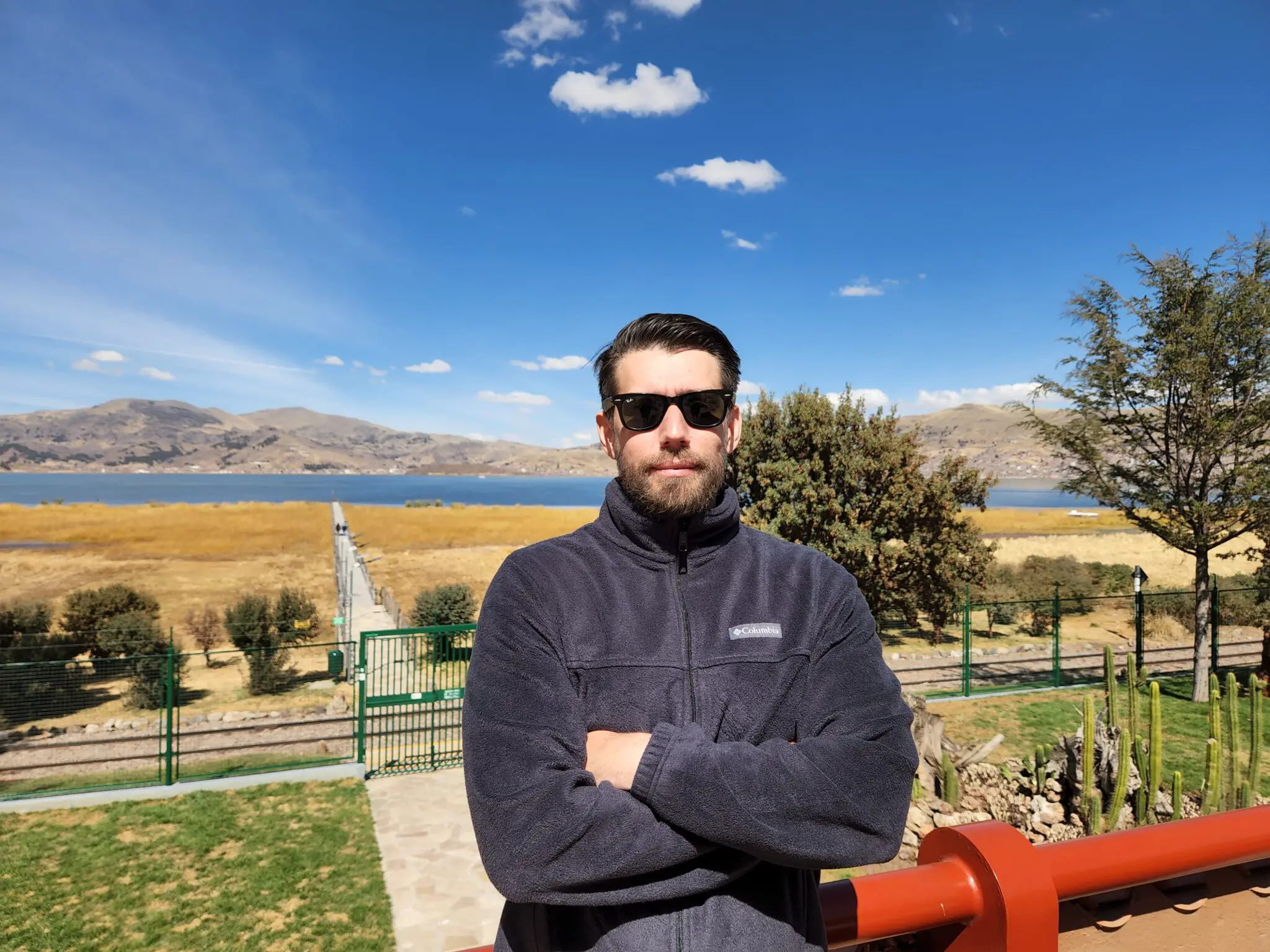Inca Trail Fitness Level
Michael continues to travel, searching for new business opportunities and fantastic trip experiences to offer travelers. You can find Michael testing unique tours and hotels around LATAM. He enjoys getting up early and a hot cup of coffee before getting a good workout and starting the day.
Last Updated on February 20, 2023 by James Bustamante
You don’t need a fantastic fitness level to hike the Inca Trail to Machu Picchu. Of course, being very fit does help, but even someone of average fitness can take this enigmatic hike.
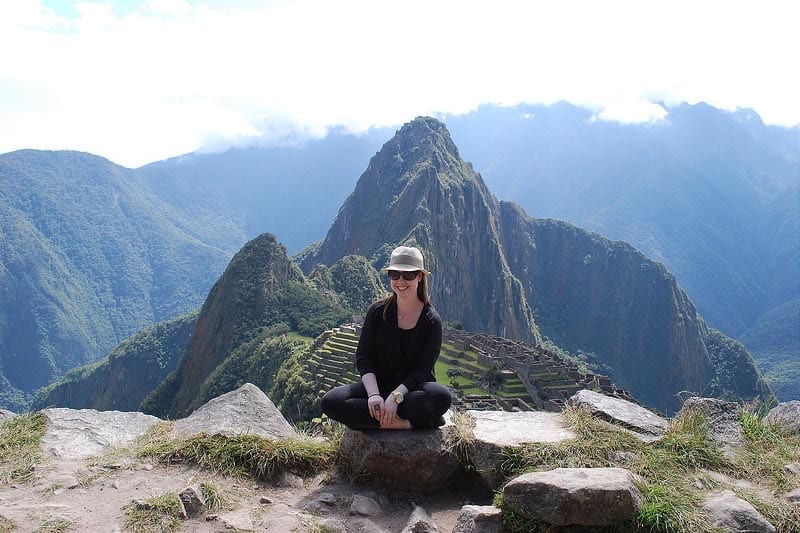
We get many questions regarding the Inca Trail fitness level from travelers looking to book the famous 4-day trek. In fact, it is the most common question for anyone about to book the hike in their Peru tour package. Potential hikers want to make sure they are either already fit enough to wander into the Andes on a 4-day long route or if they need to train for a few weeks before getting to Peru. Potential fitness requirements are essential in properly preparing for a Hike to Machu Picchu.
On the other side of the aisle, we also have plenty of travelers who usually book their trip, including flights, hotels, tours, guides, land transportation, transfers, and trek, before realizing that they never thought about the fitness level required for hiking through the Andes.
Typical questions coming from travelers are along the lines of:
- “Hey, can I even do it?
- “What is the Inca trail fitness level requirement?”
- “I exercise a few times a week. Is that enough?”
- “I did a hike in Colorado a few years ago; is it similar to that?”
- “How many hours a day do we hike?”
- “How many miles/km do we walk each day?”
- “Do I have to carry my backpack?”
- “How difficult is the Inca Trail?”
There are easy answers to these questions, and preparation for the Inca trail is relatively easy. Although the Inca trail is actually an easy to moderately challenging hike, there are a few factors to weigh in which will determine how strenuous the walk is for each traveler.
Everyone Adapts to the Elevation Differently
When it comes to acclimatization, some travelers arrive in Cusco and don’t feel a little much of a difference. At least not right away. Cusco is located at over 10,000 feet above sea level, so there will eventually be some acclimatization time needed, even for travelers that have been in high elevations before.
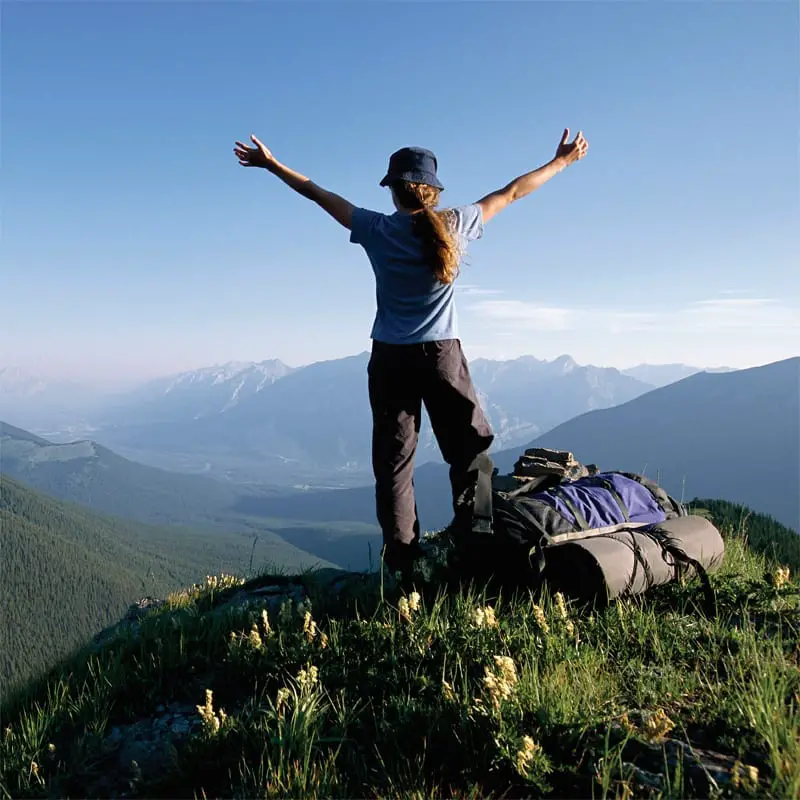
Sadly, this is not true for everyone. Many travelers will immediately feel the effects of the elevation in Cusco, while others begin to feel the change in a few hours. Each traveler might react differently and have varying symptoms ranging from a light headache to more severe nausea.
We always recommend following a protocol that requires arriving in Cusco at least 48 hours before starting any multi-day hikes. Understanding this is part of your Machu Picchu Travel experience and an excellent way to make your trip through the Andes as smooth as possible.
We also have a handy guide on preventing elevation sickness: How to deal with the Elevation in Cusco.
The classic Inca Trail is of easy to moderate difficulty, but not everyone will feel the trek the same way. The hike will typically feel easier for an active, avid hiker, regularly attending the gym, runner, sprinter, etc. Anyone with any inclination/interest in sports might have an easier time on any high-elevation hike.
Being an athlete or very active is not necessary, but it makes adapting to the hike seem much more effortless. If you want to ensure the Inca trail fitness level isn’t something beyond your abilities, sometime in the gym will help.
Inca Trail Distances and Elevation
Now let’s take a look at what the Inca trail itinerary looks like. Below we’ve added the distances and the elevation you’ll be facing during the entirety of the hike.
Day 1: CUSCO – PISKACUCHO – WAYLLABAMBA
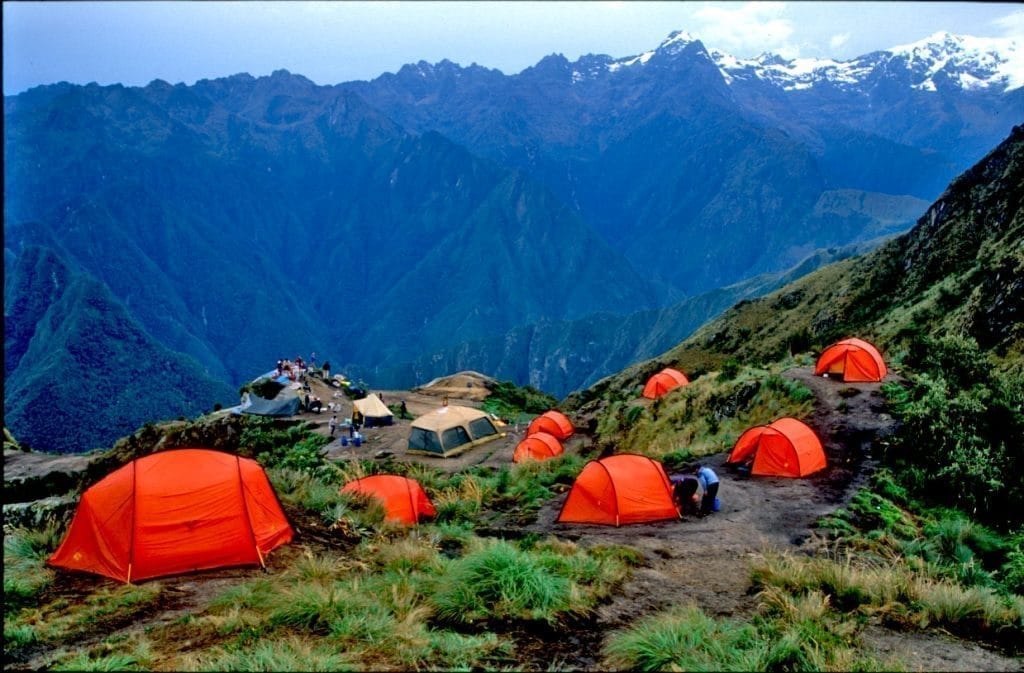
TRAIN STATION – PISKACUCHO : 3 hours approx.
DISTANCE PISKACUCHO – WAYLLABAMBA : 11 km
ESTIMATED WALKING TIME: 6 hours
PISKACUCHO : 2600 m.a.s.l.
PATALLAQTA : 2750 m.a.s.l.
HUAYLLABAMBA : 3000 m.a.s.l. / 9842 feet
Difficulty: Easy
Day 2: HUAYLLABAMBA – WARMIWAÑUSCA – PAQAYMAYU
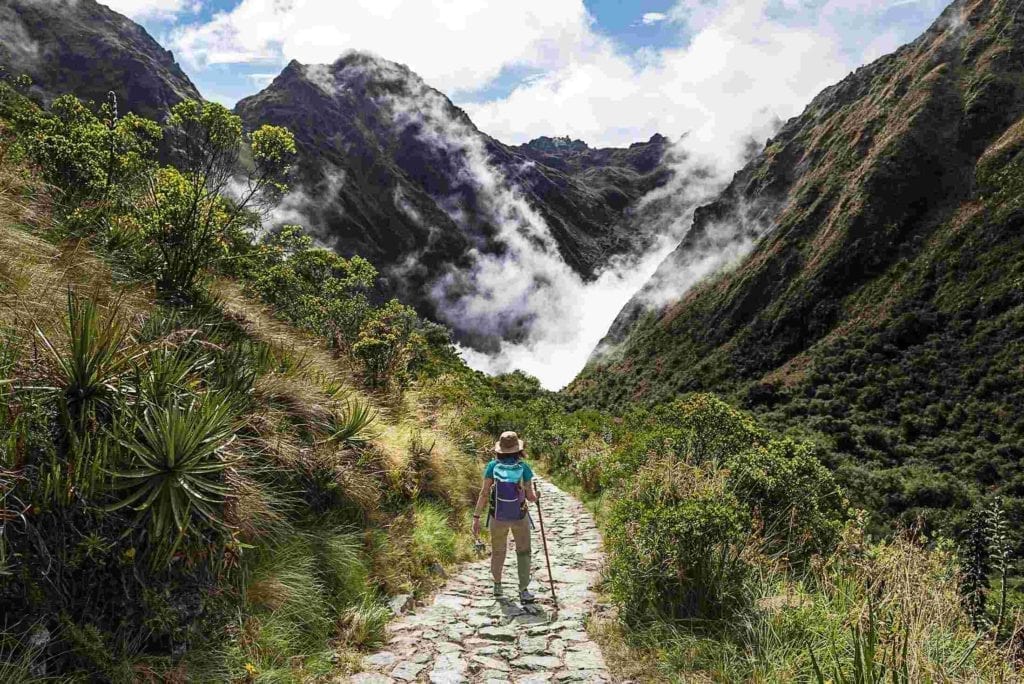
DISTANCE HUAYLLABAMBA – WARMIHUAÑUSCA : 9 km
ESTIMATED WALKING TIME: 7 hours
WARMIHUAÑUSCA : 215 m.a.s.l. / 13828 feet
PAQAYMAYU : 3600 m.a.s.l. / 11811 feet
Difficulty: Moderate
Day 3: PAQAYMAYU – CHAQ´ICOCHA – WIÑAYWAYNA
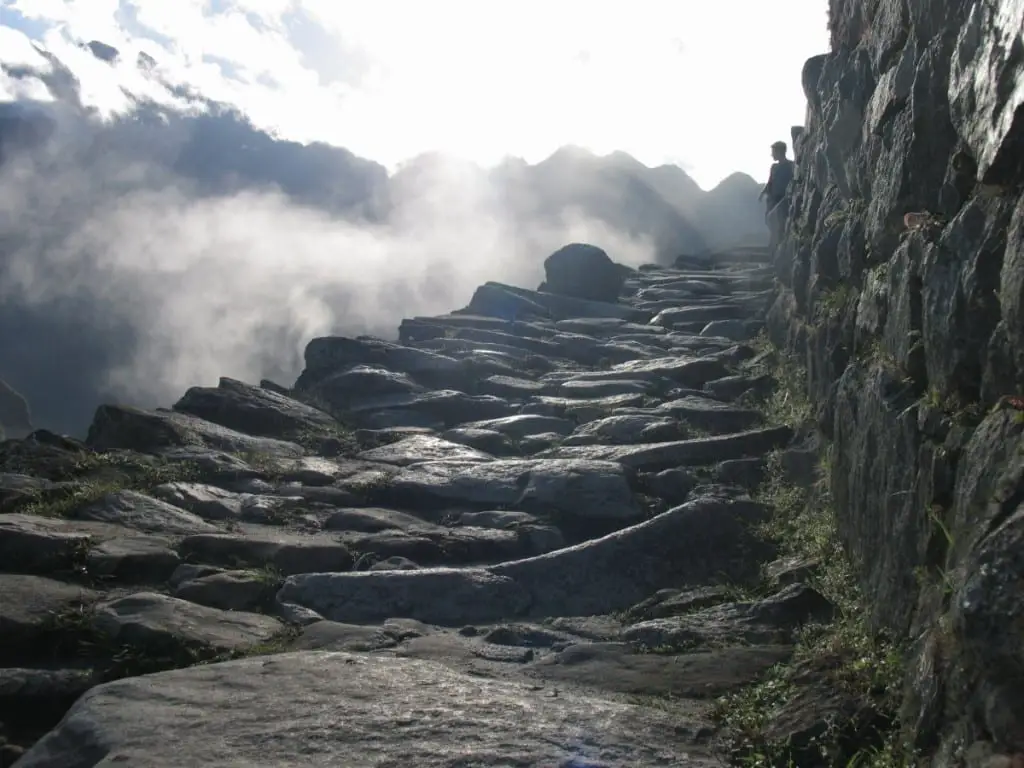
DISTANCE PAQAYMAYU – WIÑAYWAYNA : 16 km
ESTIMATED WALKING TIME: 7 hours
RUNRURAQAY: 3760 m.a.s.l. / 12336 feet
SAYAQMARKA : 3620 m.a.s.l. / 11876 feet
CHAQUICOCHA : 3500 m.a.s.l. / 11482 feet
PHUYUPATAMARKA : 3650 m.a.s.l. / 11975 feet
WIÑAYWAYNA : 2650 m.a.s.l. / 8694 feet
Difficulty: Moderate
Day 4: WIÑAYWAYNA – MACHU PICCHU – CUSCO
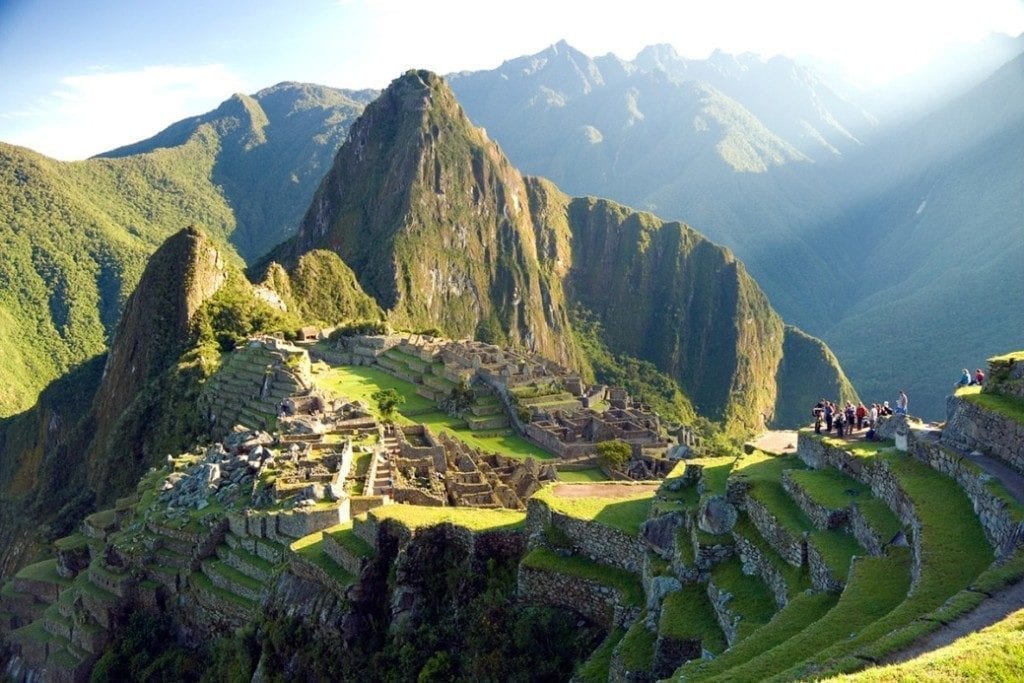
DISTANCE PAQAYMAYU – WIÑAYWAYNA : 6 km
ESTIMATED WALKING TIME: 2 1/2 hours
AGUAS CALIENTES : 2040 m.a.s.l.
MACHUPICCHU : 2400 m.a.s.l.
HUAYNAPICCHU MOUNTAIN : 2700 m.a.s.l. (2 hours round way)
MACHUPICCHU MOUNTAIN : 3150 m.a.s.l. (3 hours round way
Difficulty: Easy
Exercises For a Good Inca Trail Fitness Level
A good workout routine for someone preparing to hike the classic Inca Trail to Machu Picchu should focus on building cardiovascular endurance, lower body strength, and core stability. Here are some specific exercises and activities that can be helpful:
Cardiovascular Preparation: To build endurance for hiking in high elevations, you should get regular cardiovascular exercise such as running, cycling, or swimming. A good rule of thumb is to exercise for at least 30 minutes 3-4 times weekly. You should improve each week and increase the intensity of your workouts over time to improve your cardiovascular fitness.
Stair climbing: Climbing stairs or using a stair climber machine is an effective way to build lower body strength and endurance, which can be very helpful for hiking at high elevations. Start with 10-15 minutes of stair climbing and gradually increase the duration and intensity.
Lunges: Lunges are an excellent way to build strength in your quads, hamstrings, and glutes, which are the primary muscles used for hiking. Begin by Steplin forward with one foot and lower your body until your knee is at a 90-degree angle to perform a lunge. Repeat with the other leg. Aim to do three sets of 10-15 lunges on each leg.
Squats: Squats are another effective exercise for building lower body strength. To perform a squat, stand with your feet shoulder-width apart and lower your body until your thighs are parallel to the ground. Repeat for three sets of 10-15 reps.
Core stability exercises: Strong core muscles are essential for maintaining good posture and balance while hiking. Planks, sit-ups, and Russian twists are all practical exercises for building core strength.
In addition to these exercises, it is also essential to incorporate some hiking-specific training into your routine. For example, you can include hiking on hills or using a stair climber machine set to a high incline to simulate uphill hiking. Remember to start gradually and increase the intensity of your workouts over time to avoid injury.
Conclusion
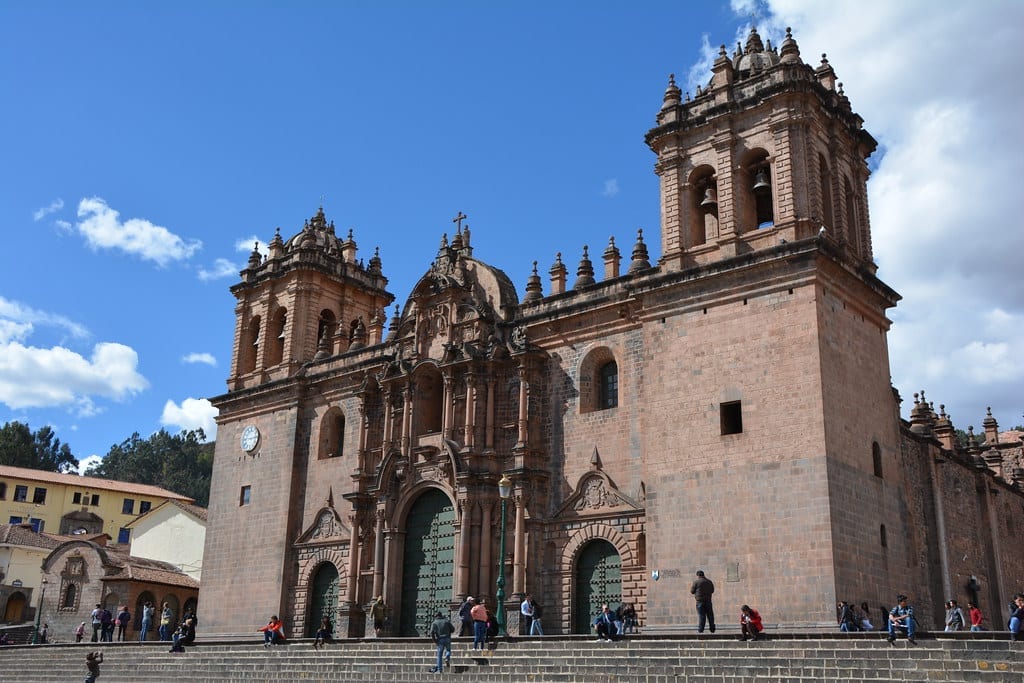
The Inca trail is an excellent trek for beginners and seasoned hikers; it offers marvelous views of the surrounding Andean mountains and a culturally immersive experience.
There are other options if you are looking for a more challenging hike. Salkantay is a moderately difficult five-day hike through the Peruvian highland wilderness.
Preparation is critical to any successful trekking experience, so take the necessary steps before starting the Inca trail. Also, consult with your travel advisor about anything related to your all Machu Picchu Reservations.
Frequently Asked Questions About the Inca Trail Fitness Level
This hike is easy to moderate in difficulty.
Yes, we camp and sleep in tents for 3 nights before finally arriving in Machu Picchu on the morning of day 4.
Yes. In case of evacuations, there are routes leading out of the Inca trail onto the main road. This is very uncommon, though.
Yes. The Salkantay, for example, is a more demanding hike.
Yes. Porters are required to carry a small oxygen tank in case of emergencies.
Yes, the Inca trail is a safe hike, and plenty of people over 65 take this hike every year with us.
The Inca Trail doesn’t allow children on the trek.

